Deer toes have long been used as natural bells for dancers to keep rhythm with the drum. Some traditional men dancers are returning to this natural sound. Deer toes also can be used as decorative pendants. When attaching a group of them to a wood hand wand, they become a rattle.
Deer toes are often recovered during the deer harvests held annually throughout the United States. If you are a hunter, you can process them yourself. Depending on your state regulations, they may be available from butcher shops handling game processing. Again, depending on state regulations, they may be available from craft suppliers prepared as we describe here.
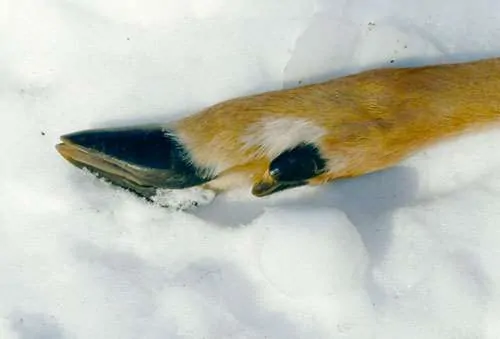
When processing deer, the leg bones are available as shown in Photo B. It is necessary to boil the toes on the legs in order to remove the toe nails. Use a big kettle. We suggest doing this outside to avoid smelling up the house! Bring the water to a boil and hold for at least 15 to 30 minutes. The boiling time will vary depending on how fresh the legs are. Just the first 4 inches of the leg need to be under water.
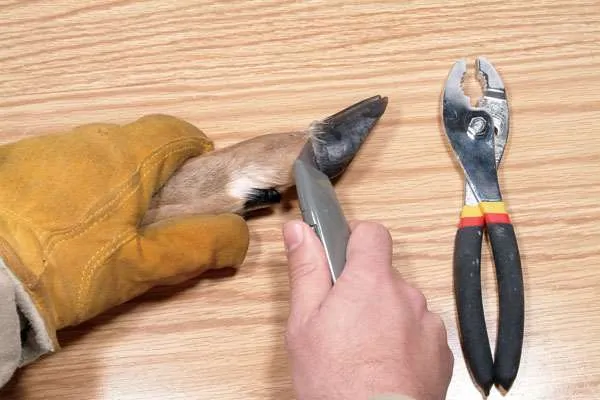
We recommend using heavy leather gloves when working with the hot legs and bone. Using a box cutter as shown in Photo C, cut a slight edge around the nail. With a heavy pliers as shown in Photo D, twist and pull off each of the nails. The toe pad will also come with the nail. We suggest processing all of the legs you have before going on to the next step. The toes with pads are now like the ones available from craft supply shops.
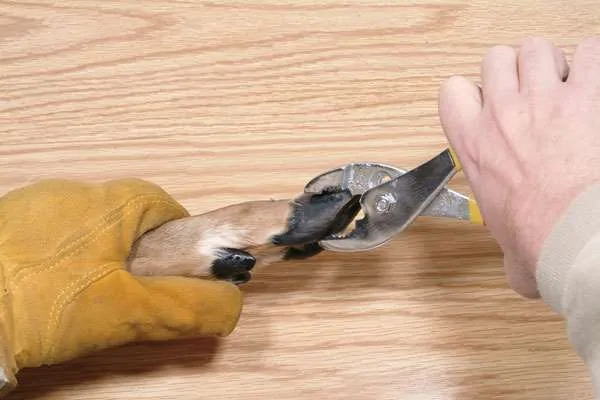
Toes can be used with the pads on. But you will find that if you are using them as leg bells or rattles, cutting out the pads gives them a crisper tone.
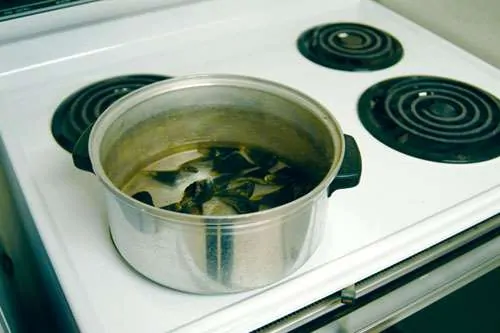
When the toes have been soaked and boiled, they are fairly soft and pliable. To clean and shape them for your project, you need to get all of the toes soaking in hot water again in a pan as shown in Photo E. Taking them out one at a time, clean out any loose tissue inside the toe nail with a small pen knife.
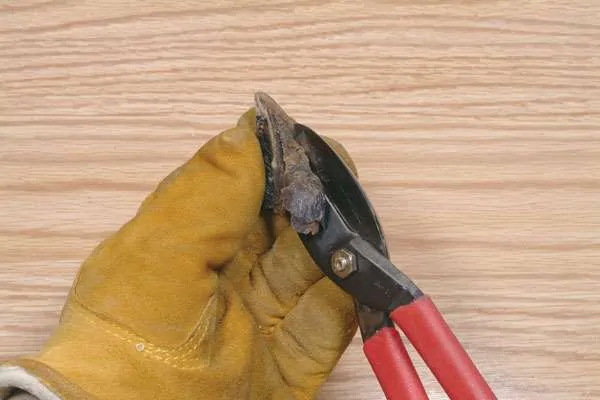
If you are going to remove the pad, use a sharp tin snips as shown in Photo F. Cut up both sides of the pad and remove it. Finish cleaning the inside of the toe nail if needed. Using the tin snips, trim around the nail edge to smooth it out. You can cut some decorative shape to the edge as shown in Photo G. Complete all of your toes and let them dry.
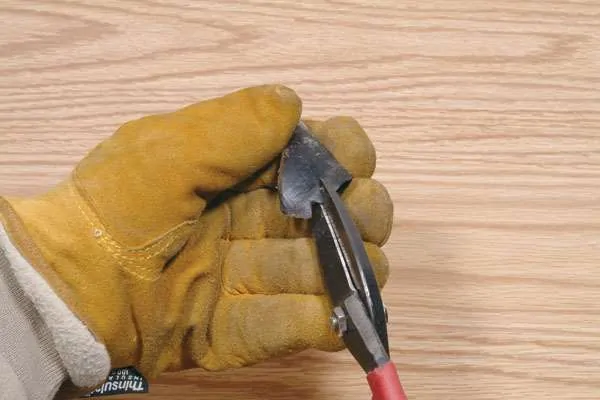
When they are cooled down and dry, you are ready to drill a stringing hole. If you left the pads on, drill into the tip of the toe nail on the pad side. The hole should go into the pad to the inside of the toe. If you cut the pad out, drill the hole at the tip of the toe nail, starting the drill bit on the inside exposure of the nail as shown in Photo H. These holes need to be big enough for the lacing you plan to use.
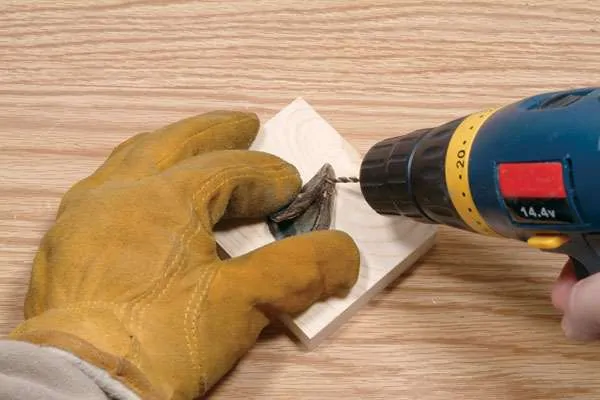
Photo I shows three deer toes strung with lacing, but for different projects. The top one is used in the leg band in Photo A. Knots are tied to the end of the thongs which are then strung through the hole in the toe. A bead is threaded. Photo A shows that these attachment thongs are then threaded through the front side of the leather leg band and then back out another in- line hole. A bead, then another toe is laced and a knot is tied to end the attachment at the selected length.
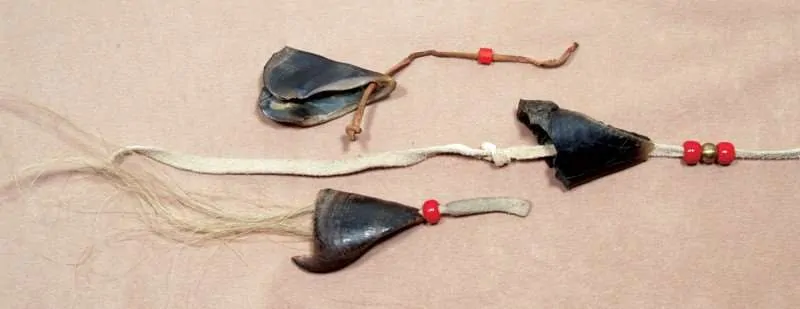
The bottom two toes in Photo I are used as pendants. These have the pads left on. The bottom one has a bundle of horse hair tied into the lacings knot and then pulled inside the toe. These examples use the deer toes as you would use a cone.
Copyright 2006 by Loren Woerpel; Noc Bay Publishing, Inc.
Last Updated on January 29, 2013 by Paul G
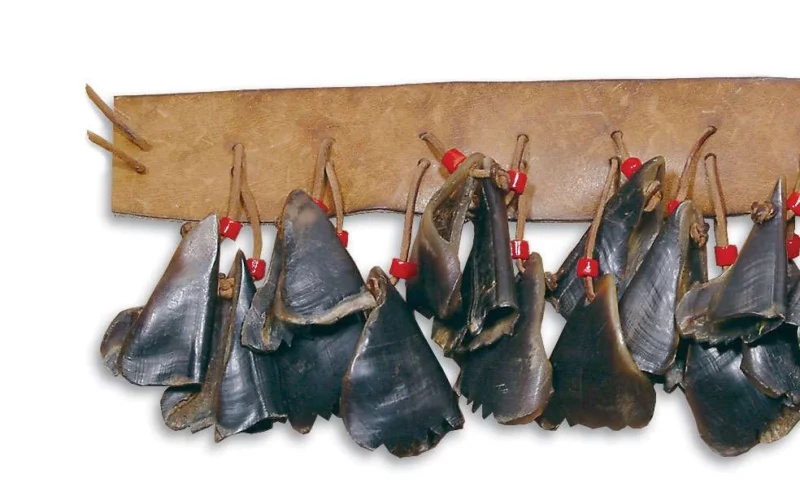

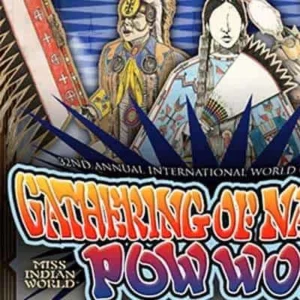
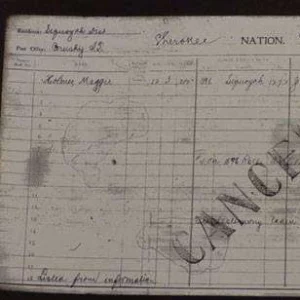
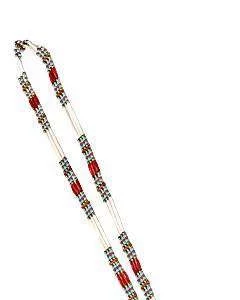
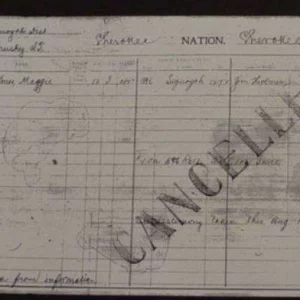
Scuffling Thunder Turtle
says:Great info,
We belong to a Native American flute circle and one person has a deer toe rattle. I harvest a white tail deer in NY every year and also bring back hides to make native style hand drums. The Creator provided the animal for food and I try to make use of it all. Bones for handles, antlers for buttons etc as well as the aforementioned hides. Thanks again for the info!
Artena2020
says:Can the leg bones esp those from the thighs be used to make flutes? If you use the hooves for cones how do you seal the back so the knotting on the bead work or thongs remains hidden? Great article.
strong medicine woman
says:enjoyed the info, but was wondering if you could explain how to prepare the leg bones for jewelry, i tried a few times but it didn’t turn out to well. appreciate any help
Gischihan
says:Dear Lady’s,
I am sorry if this offends you. If we did not hunt these deer, they would overpopulated and starve to death.
When we hunt them, we eat them. We tan their hides for clothing and implements.
They are not Bambi.
BTW. Enjoy that hamburger at lunch today.
Ann Conroy
says:This is simply disgusting. No regard for the life of the poor deer at all. The lack of caring shown by the human race never ceases to appall me.
Danceswithwolves
says:SHAME ON YOU, PEOPLE!!!!!!!!!!!!!!!!!!!!!!!!!!!!!!!!!!!!!!!!!!!!!!!!!!!!!!!!!!!!!!!!!!!!!!!!!!! That’s just SO cruel and selfish and sad… I hope it all comes back to you- for all those innocent and helpless animals you have killed and keep liking their fur, toes, etc… Just really sad…..
Gischihan_Sr
says:two points:
1. Leave the deer legs in a trash bag over the winter. They wil “putrify” by spring. Hang a plastic sheet between two trees. Flick each leglike throwing atommy hawk. The deer toes and dew claws wil fly right off into the plastic sheet.
Smelly job, but it works.
2. After washing the toes and dew claws in an anitbacterial soap, let them dry in the air. Place the dry toes in dews claws in a container with moth balls. Close the lid. In about a month, the two oders will cancel each other out. Result, no dead game smell on the toes and dew claws.
This works with elk and mountain goat as well.
Ginger
says:wow, chi megwetch! I was just wishing to now how to do this.